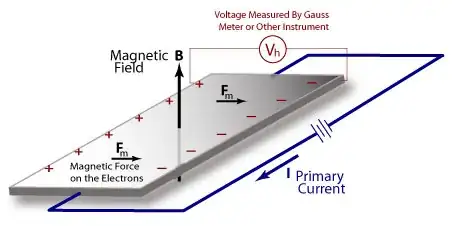In the Hall Effect current is passed through a wide strip of metal in a perpendicular magnetic field. Since (some of) the negative charges in the metal move but the positive ones stay put, the magnetic field will cause a potential difference between the two sides of the strip:

How can this potential difference be measured? Can we simply connect a thin wire transversally between the two sides of the strip and see a current flow through it?
If no, then what prevents the current from flowing?
If yes, then aren't we getting something for nothing here? Our thin wire has some resistance -- where does the energy lost as heat in the wire come from? Does the total resistance of the primary circuit increase because we connect a wire between the two sides? Increased DC resistance because we add more conducting material to the system seems to be counterintuitive.
Image Source: https://www.nde-ed.org/EducationResources/CommunityCollege/MagParticle/Physics/Measuring.htm, via Jahan Claes.